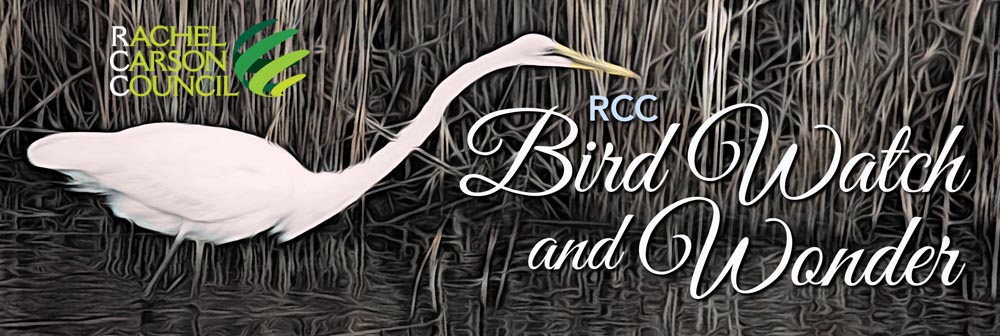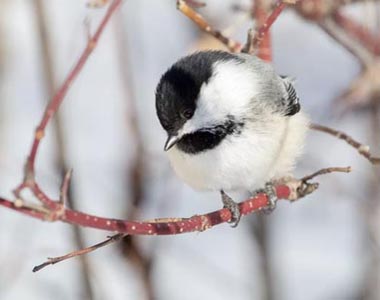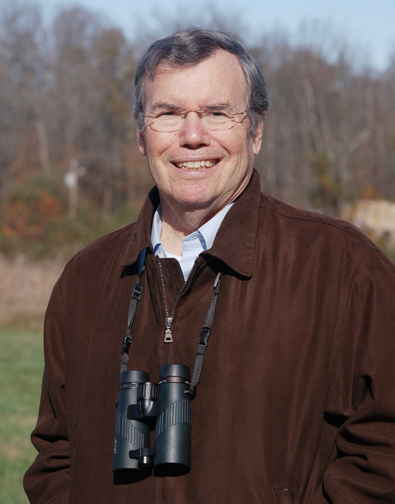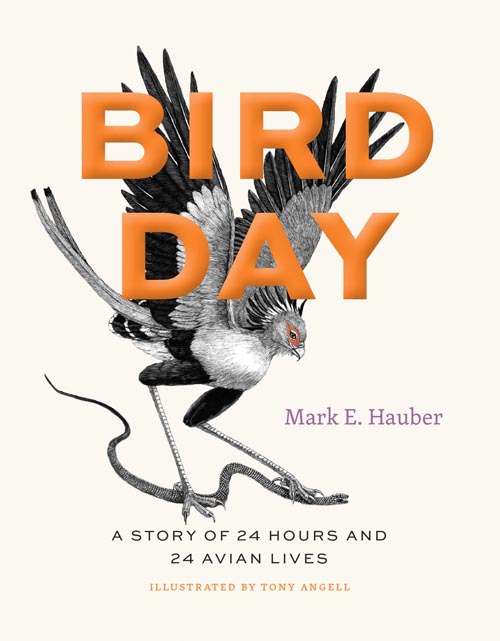 | | | As we head into the season of good tidings and joy, our December issue of RCC Bird Watch and Wonder has plenty of good news. That includes the fact – that you already know, but now it’s official – that feeding the birds is good for us human beings! And it’s still good for the birds, despite growing warnings to stop putting out those sunflower seeds every time there is an outbreak of avian disease.  It seems that we could learn a lot about living from our feathered friends, including the incredible power napping of adorable chinstrap penguins. And, if you worry about climate change and fossil fuel emissions, consider how all kinds of birds manage to stay warm on frigid days despite their lack of furnaces, fireplaces, or gas heaters. RCC’s bird maven Ross Feldner lays it out in an amazing essay that also offers tips (including feeding…) on how to give a helping hand to birds in winter. It seems that we could learn a lot about living from our feathered friends, including the incredible power napping of adorable chinstrap penguins. And, if you worry about climate change and fossil fuel emissions, consider how all kinds of birds manage to stay warm on frigid days despite their lack of furnaces, fireplaces, or gas heaters. RCC’s bird maven Ross Feldner lays it out in an amazing essay that also offers tips (including feeding…) on how to give a helping hand to birds in winter.
And talk about brains and survival strategies! RCC guest contributor Bryan Pfeiffer in his blog, Chasing Nature, envies those pesky robbers of french-fries – seagulls. Gulls soar on the wind, rise with the dawn, and do pretty much what they want — for good or ill. But it is the freedom of this worldwide bird that is what Pfeiffer admires most.  Birds do pretty well on their own without the human perils of gunfire and global climate change. Wading, long-feathered birds like herons and egrets were nearly eliminated by hunters in Texas in the early part of the twentieth century until Audubon created a sanctuary where they are undisturbed. Now, one hundred years later, the Texas Gulf Coast boasts the largest concentration anywhere of that beautiful and dancing bird, the Reddish Egret, along with huge gatherings of other waders. Birds do pretty well on their own without the human perils of gunfire and global climate change. Wading, long-feathered birds like herons and egrets were nearly eliminated by hunters in Texas in the early part of the twentieth century until Audubon created a sanctuary where they are undisturbed. Now, one hundred years later, the Texas Gulf Coast boasts the largest concentration anywhere of that beautiful and dancing bird, the Reddish Egret, along with huge gatherings of other waders.
So, as we head toward a new year and all those resolutions, you may want to also check out our “Books” section and Bird Day by Tony Angell to find out just what it is that birds really do all day and what you might learn from them to add to your own attempts at a happier, healthier lifestyle. Of course you will also find in this December Bird Watch and Wonder news and stories about dangers and declines, even decimations, for the birds. But you may want to put off worrying about what to do about all that for the next couple of weeks over the holidays. Then, along with power naps, eating French Fries, and shivering to stay warm, you can add that to your New Year’s resolutions. | | | | | | | |  Bob Musil is the President & CEO of the Rachel Carson Council and author of Rachel Carson and Her Sisters: Extraordinary Women Who Have Shaped America’s Environment (Rutgers, 2016) and Washington in Spring: A Nature Journal for a Changing Capital (Bartleby, 2016). He is also the editor of the forthcoming annotated edition from Rutgers University Press of Rachel Carson’s Under the Sea-Wind with his Introduction, updated marine science, and historic and contemporary illustrations and photographs. Bob Musil is the President & CEO of the Rachel Carson Council and author of Rachel Carson and Her Sisters: Extraordinary Women Who Have Shaped America’s Environment (Rutgers, 2016) and Washington in Spring: A Nature Journal for a Changing Capital (Bartleby, 2016). He is also the editor of the forthcoming annotated edition from Rutgers University Press of Rachel Carson’s Under the Sea-Wind with his Introduction, updated marine science, and historic and contemporary illustrations and photographs. | | | | | | Bird Feeding is Important to Another Species: Humans Bird feeding’s benefits to people should play a role in public guidance and policy, according the author of a new paper on the practice. “Wildlife agencies and others making decisions on managing bird feeding need to be considering not only what the science is behind what’s going on with birds, but also the science behind what’s going on with people,” says Ashley Dayer, associate professor in the department of fish and wildlife conservation at Virginia Tech and lead author of the paper in People and Nature. | | | | | | | | Penguins Take Thousands of Naps Every Day The birds’ impressive ability to nod off may be an adaptation to an environment of constant interruptions. Penguins are champion power nappers. Over the course of a single day, they fall asleep thousands of times, each bout a few seconds long, a new study has found. Although animals have a wide range of sleeping styles, penguins easily take the record for fragmented sleeping. | | | | | | | | Fresh Hope for Tracking Bird Migration in the Remote West Scientists are turning to a low-cost radio-based technology to help solve the mysteries of declining bird populations. Twice each year, members of a subspecies of red knots — salmon-colored sandpipers — migrate thousands of miles between their wintering grounds in northern Mexico and breeding sites in the Arctic tundra, encountering myriad obstacles along the way. Thought to migrate during both day and night, brightly lit cities likely disrupt their nighttime journeys, and rising sea levels and invasive species threaten the wetlands they rely on for refueling. | | | | | | | | Welcome to the Island Where Egrets Rule A century ago, Audubon Texas made a commitment to protecting birds along the Texas coast. They started here. One hundred years ago, Audubon leased its first island from the state of Texas in an effort to provide sanctuary for wading birds, like herons and egrets, that were being targeted by hunters for their feathers. After a century of active stewardship, the Texas Gulf Coast now has the largest colonies of Reddish Egret—colonies that are also home to thousands of Great Blue Herons, Great Egrets, Roseate Spoonbills, and other spectacular wading birds. | | | | | | | | Why Warblers Flock to Wealthier Neighborhoods In the unequal distribution of birds and other species, ecologists are tracing the impact of bigoted urban policies adopted decades ago. At a meeting of urban wildlife researchers in Washington, D.C., in June, one diagram made it into so many PowerPoint presentations that its recurrence became a running joke. The subject, though, was serious: The diagram illustrated the links between structural racism, pernicious landscape features such as urban heat islands, and impacts to biodiversity, and it came from a study published in the journal Science. | | | | | | | | | | Getting Gulls IN THE MANY WAYS that nature comes into our lives, ways of grace or brutality, even ways of comedy or intellect, perhaps no other group of wild animals pulls it off with the versatility of gulls. Whether they’re stealing French fries from the trash or taking defenseless puffin chicks from a nest, whether they glide elegantly in the company of whales or merely lounge on the beach contemplating the tides, gulls exhibit a range of behaviors we don’t often see in other wildlife. | | | | | | | | Brrr… Bird Strategies for Staying Warm During Winter With winter right around the corner for many of us, I started to ponder how birds stay warm during the cold winter months. What methods do bird use to maintain their warmth during those frigid days? One such phenomenon can be observed in Common Redpolls. Despite their diminutive size, weighing less than 15 grams, these industrious foragers possess the remarkable ability to endure temperatures that plummet nearly 100 degrees below freezing! | | | | | | | | Shrinking Bodies, Growing Wings: Climate Change Having Odd Effect on Birds, Study Finds Climate change is shrinking our birds. Birds in both North and South America are getting smaller as the planet warms, and the smallest-bodied species are changing the fastest, a study reported Monday. At the same time, birds also are getting longer-winged, according to the study, which pinpoints human-caused climate change as the cause. | | | | | | | | How Marisol Ortega Brings Birds to Life With Her Illustrations We spoke with the artist who created the Raven vs Crow design for our merch collection about her inspiration for illustrating birds and other wildlife. Take one look at Marisol Ortega’s portfolio and you’ll notice a theme: vibrant pops of color, linework evoking both a detailed and playful technique, and a plethora of birds, other fauna, and flora. There’s a reason that Ortega—a first-generation Mexican-American designer, illustrator, and letterer—gravitates toward drawing flora and fauna. | | | | | | | | Picking Up the Pen Again: JP Brammer Reignited His Passion Sketching Birds We spoke with the illustrator and writer who reimagined the Scissor-tailed Flycatcher for Audubon’s The Aviary series about inspiration, process, and generating understanding through art. JP Brammer is a writer and artist from rural Oklahoma, with a popular advice column ¡Hola Papi! and a recently published memoir by the same name. JP reimagined the beautiful Scissor-tailed Flycatcher for Audubon’s ‘The Aviary’ series, which explores the intersection of birds and art. | | | | | | | | Pause in Migratory Bird Treaty Act Improvements Concern Conservationists Finalizing Key Protective Measures Will Reduce Commercial Hazards The U.S. Fish and Wildlife Service (USFWS) announced that expected efforts to update the Migratory Bird Treaty Act (MBTA) are on hold. This rulemaking update would establish a general permitting system under the Act that would clarify and improve the process for handling the predictable and preventable killing of migratory birds from commercial activities. | | | | | | | | Eastern Screech Owl This diminutive owl's name is somewhat misleading as it does not really screech. It "whinnies" and calls with soft trills. Adults range from 6.5-10” in length and have piercing yellow eyes and prominent ear tufts. It prefers open mixed woodlands, parklands, deciduous forest and even wooded suburban areas and avoid areas known to have larger owls. The Eastern Screech-Owl's call is a tremolo with a descending, whinny-like quality, like that of a miniature horse. It also produces a monotone purring trill lasting 3–5 seconds. | | | | | | | | Momentary Meditations are published every Monday to awaken what Rachel Carson called “the sense of wonder” and what Albert Schweitzer called “a reverence for life.” Looking deeply into our interdependence with all life on earth helps us know what we must do. In our harried world, these meditations are meant to serve as a renewable resource for compassion and love. Sounding the Dawn of Winter - The laughing call of a pileated woodpecker greeted me as I entered the woods. I continued walking until I heard it again. This time, the laugh was accompanied by a heavy pounding sound. I stood quietly for a long time. Then suddenly, I noticed small wood chips falling in front of me. I looked up, and twenty feet above me was the red-headed blackbird hard at work. | | | | | | | | Bird Day A Story of 24 Hours and 24 Avian Lives Mark E. Hauber Illustrated by Tony Angell  An hourly guide that follows twenty-four birds as they find food, mates, and safety from predators. An hourly guide that follows twenty-four birds as they find food, mates, and safety from predators.
From morning to night and from the Antarctic to the equator, birds have busy days. In this short book, ornithologist Mark E. Hauber shows readers exactly how birds spend their time. Each chapter covers a single bird during a single hour, highlighting twenty-four different bird species from around the globe, from the tropics through the temperate zones to the polar regions. We encounter owls and nightjars hunting at night and kiwis and petrels finding their way in the dark. As the sun rises, we witness the beautiful songs of the “dawn chorus.” At eleven o’clock in the morning, we float alongside a common pochard, a duck resting with one eye open to avoid predators. At eight that evening, we spot a hawk swallowing bats whole, gorging on up to fifteen in rapid succession before retreating into the darkness. For each chapter, award-winning artist Tony Angell has depicted these scenes with his signature pen and ink illustrations, which grow increasingly light and then dark as our bird day passes. Working closely together to narrate and illustrate these unique moments in time, Hauber and Angell have created an engaging read that is a perfect way to spend an hour or two—and a true gift for readers, amateur scientists, and birdwatchers. Purchase here | | | | | | The December 2023 issue of Bird Watch and Wonder was produced by Ross Feldner | | | | | |  The Rachel Carson Council Depends on Tax-deductible Gifts From Concerned Individuals Like You. Please Help If You can. The Rachel Carson Council Depends on Tax-deductible Gifts From Concerned Individuals Like You. Please Help If You can. | | | |  Sign Up Here to Receive the RCC E-News and Other RCC Newsletters, Information and Alerts. Sign Up Here to Receive the RCC E-News and Other RCC Newsletters, Information and Alerts. | | | | | | | | | | | |